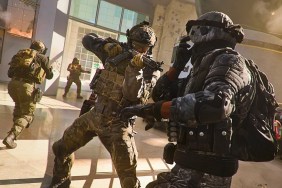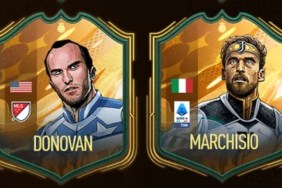The Battlefield of the Mind
Have you ever wondered why this series is called Final Fantasy, when there’s nothing final about it? I mean, given a few discrepancies, there have been thirteen titles in the main series alone, and if there’s one thing we can count on, it’s that there will be another iteration. If they’re going to keep coming out with new ones, can’t SquareEnix just be honest and start giving them names like Previous Fantasy? Or Penultimate Fantasy? Do you lay awake at night wondering about these things the way I do? Wait, what’s that you’re saying? You want me to shut up already with the useless questions and actually talk about the game? Well, fine then. You’re no fun anymore.
[image1]If you must know, Final Fantasy Tactics was originally launched in 1998 for the PlayStation, and FFT: The War of the Lions is essentially the same game ported onto the PSP platform. If you’re a Final Fantasy fan, this game might confuse you at first. A lot of what’s going on will sound familiar –Black Mages still cast Firaga spells, and you still spend your hard-earned gil on Hi-Potions for your team. But for all the familiar vocabulary, don’t think that this is just another slap-dash RPG. Final Fantasy Tactics is like Final Fantasy XII in the same way that an Altoid is like a Mojito – they’re made from similar ingredients but are fundamentally different things.
At the core of FFT: The War of the Lions is a spectacular and complicated tactical battle system. There aren’t many places to explore or side quests to pursue. Just solid strategy, one hard-fought battle at a time, as you make your way through the story. The game takes place in Ivalice, a medieval, European-looking land populated entirely by blond, waifish children with no noses. The plot evidently involves a kidnapped Marquis, a group of rebels, and some long-standing tiff between the nobility and the common folk, but I stopped paying attention to all that after a while. Not only is the storyline incredibly dense and convoluted, but the characters all insist on speaking like those annoying vendors who try to get you to buy the giant turkey legs at the Renaissance Faire. I mean, I like Shakespeare, but all the ‘verily’ and ‘forsooth’ and gobbledygook was too much for me to handle. Just let me get back to hitting things with my pointy stick, ok?
Because that’s where this game shines. In battle sequences that sometimes resemble Masterpiece Theatre versions of Children of the Corn, your party members who look like a bunch of Aryan fifth graders face off against your enemies in a map grid. As each of your characters’ turns come up, there are eight million things you need to think about before deciding what action to take. Should you clump your guys together for physical defense, leave theming open to an area-wide magical attack? Should your knight rush forward for a powerful attack, perhaps blocking your archer’s shot? Should you start charging up your mage’s Blizarra, or are your enemies going to move out of the way before you can get the spell off? You may even need to consult your horoscope before launching an attack, since your astrological compatibility can affect how much damage your attacks deal to the Pisces goblins and Sagittarius wolves you’ll find out there in the wild. There’s a lot to think about, and all of that is great.
[image2]It’s complicated, though, and if you’re anything like me, it will take you a while to figure it all out. On the one hand, they don’t make it easy for a first-time player. As a FF tactical veteran, I scoffed at the “Tutorial” option and plunged straight into combat, only to realize I had no clue what the heck I was doing. When I finally relented, I discovered the tutorial had more in common with a product demo for accounting software than it did with anything ‘fun’. Slogging through the boring and unskippable lessons for that one bit of information I needed made me wish I had something more interesting to read, like a Unix manual. On the other hand, once I got the hang of the game, I was frustrated by how many steps it takes to assign orders to my characters. By the time I move my knight for the 187th time, do I really need a pop-up telling me how movement commands work? I think not. Seeing as how individual battles can take 30-45 minutes apiece, any streamlining of the process would have helped.
Back on the plus side, another great feature of the game is job specialization. Every character in your party can change jobs to whatever you see fit – your knights can become mages at the click of a button. Characters gain job points based on what they actually do in battle, not what they’re supposed to do in their role, so your archers can gain credit for knightly activity and vice versa. As characters level up, more sophisticated jobs open up, such as Time Mage, Mystic, or Ninja (How cool is that?!). You will find yourself constantly tweaking your party’s job roles to find that perfect balance that will lay waste to the strongest enemies.
[image3]The opening sequence and cut-scenes of Final Fantasy Tactics are absolutely beautiful, employing a fluid, cel-shaded style of animation that looks unlike anything else I’ve seen in a video game. The sequences have more in common with high-quality anime or the golden years of Disney than they do with the polygonal CGI we usually see on consoles and handhelds. Unfortunately, these outstanding cut-scenes are few and far between. Most of the game, you’ll look at the very simply drawn, barely animated images of your party that were brought over more or less unchanged from the original PS title. It’s a little disappointing that Square made little attempt to match the game to the mood of the animation. The in-game music is above average, although because the battle sequences can take so long, the repeating attack theme can get irritating after a while.
Althought wrapped in a mediocre package, Final Fantasy Tactics is a stellar game. If Square Enix had spent just a bit more time on the in-game graphics, writing, and user interface, this could have been one of the top titles for the PSP. As it is, we’ll just have to wait for an improved, more final, sequel.
-
Outstanding strategic action
-
Classic RPG gameplay
-
Job specialization
-
Gorgeous cut-scenes
-
Mediocre sprites
-
Confusing plot
-
Poor tutorial







